The Hunt for Dividends
We found 15 companies that are committed to sharing the wealth with stockholders.

Dividends are back, and their return couldn't have come at a better time. Since the 1960s, cash payouts have accounted for 65% of the total return of Standard & Poor's 500-stock index during sideways-moving markets. And though the rebound that followed the 2007-09 collapse remains in force, the stock market has mostly meandered since October. That could be the pattern over the next few years as well. And even if stocks fall apart (make that when stocks fall apart, as they will at some point), those that pay dividends will, as a group, almost certainly hold up better than those that don't. So investing in committed dividend payers is a timely strategy if you want to own stocks for their growth potential but worry about another punishing market decline. (For more about the allure of dividends, read 5 Reasons That Dividends Matter.)
In any case, cash dividends are certain to rise this year and next regardless of where stock indexes go. This year, the 366 dividend-paying members of the S&P 500 are expected to hand out $206 billion in cash, up 5% from 2009. Already, 72 S&P 500 companies have announced dividend increases in 2010.
The reason for this largess is plain: Corporate America is flush with cash, and S&P 500 companies are sitting on $3.2 trillion of it. But executives are reluctant to make big capital expenditures, hire more people, or raise salaries and benefits substantially until they feel more confident about the economic recovery. And, like you, they're earning next to nothing on their cash stashes.

Sign up for Kiplinger’s Free E-Newsletters
Profit and prosper with the best of expert advice on investing, taxes, retirement, personal finance and more - straight to your e-mail.
Profit and prosper with the best of expert advice - straight to your e-mail.
So managements are under pressure to put their cash to work. Some are using it to buy companies or hard assets, such as energy reserves; others are using the green stuff to pay down debt and buy back shares (buybacks reduce the number of shares outstanding, boosting earnings per share and, theoretically, supporting a stock's price). But, says Steve Schroll, manager of RiverSource Dividend Opportunity Fund, cash distributions are a sure thing, while stock buybacks are "subject to a great deal of skepticism." Companies may not repurchase as many shares as they say they will in their buyback announcements. And in 2008 and 2009, dozens of companies suspended buybacks but continued to pay cash dividends.
Some analysts believe the financial crisis and the cataclysmic bear market may have permanently altered executives' attitudes toward dividends. So they expect to see companies pay out a higher proportion of earnings in the future. As recently as 2006, the payout ratio (dividends divided by earnings) was 29% for S&P 500 companies; last year it was 37%, and Dan Peris, who runs Federated Strategic Value Fund, thinks the figure is heading toward 50%.
Identifying good dividend payers involves more than just screening for stocks with high yields (annual dividend rate divided by share price). In fact, yields that are well above average may reflect a battered share price and signal that the market expects the company to slash, or even eliminate, its dividend.
Turbocharged growers
One time-tested strategy is to look for companies with a history of regularly boosting dividends by at least 10% a year. Ideally, you want companies with stable businesses whose profits and cash flows are growing at least as fast as their dividends and that are not relying on debt to finance the payouts. We've identified four companies that over the past five years have expanded their disbursements by at least 30% a year and another that's done so by more than 20%. Don't count on them to continue raising their distributions at such an exponential pace. If they did, they'd soon be paying out more than they earn. Still, their recent actions show a commitment to sharing more of the wealth and delivering above-average dividend hikes as their profits increase.
Cardinal Health (symbol CAH). This distributor of drugs and medical products is holding the line on debt and share repurchases while it regularly boosts dividends. Cardinal would likely be-nefit from health-care re-form because formerly uninsured patients would gain coverage, and that would lead to more spending on drugs (see 5 Health-Care Reform Winners).
CSX (CSX). The big eastern railroad pays out just one-third of its earnings as dividends, which have quadrupled since 2005. Competitor Norfolk Southern pays out half of its earnings, suggesting that CSX has more room to boost its payout.
McDonald's (MCD). The fast-food giant, with a market capitalization of $71 billion, is the primo dividend raiser among ultra-large companies. It generates enough cash flow to raise dividends, retire debt and buy back shares.
Praxair (PX). A producer of industrial gases, Praxair may not be as cyclical as its product line suggests: About 20% of sales come from the health-care, food and beverage industries. The company is a big player in South America and is expanding sales in China and India.
Yum Brands (YUM). The owner of KFC, Pizza Hut and Taco Bell is no slouch when it comes to hiking dividends. It's been raising its payout even more quickly than Mickey D's, and it has a lower payout ratio.
New to the cause
A second strategy is to identify recent converts to the religion of cash dividends -- that is, companies that have just started paying or recently accelerated the growth of their payouts. Technology companies, which used to hold dividends in disdain for fear of seeming stodgy, are among the most prominent in this category. They've been piling up so much cash that they can't spend it all on their businesses the way they used to, so they've decided to distribute a greater proportion of their profits to stockholders. Attractive stocks in this group include:
Activision Blizzard (ATVI). In early 2010, the video-game maker declared its first-ever cash dividend, at a rate of 15 cents per year. The move was something of a surprise, but watch for Activision to increase the payout as its business continues to prosper.
CenturyLink (CTL). After ceasing its share-buyback program, this aggregation of rural phone companies, formerly called CenturyTel, boosted its quarterly dividend rate from 7 cents a share to 70 cents in 2008 to attract a fresh shareholder base. In February, it raised the rate to 72.5 cents.
Intel (INTC). The semiconductor king has $14 billion in cash and only $2 billion in debt. Intel, which handed out its first dividend in 1992, now pays at a rate of 63 cents a year and sports an above-average yield.
Texas Instruments (TXN). Sounds a lot like the Intel story: Another semiconductor company decides to turn on the cash spigot. TI has no long-term debt and $1.2 billion in cash on its balance sheet.
Wal-Mart Stores (WMT). The retailing behemoth is hardly new to dividends, first paying a nickel a share in 1974. Lately, though, Wal-Mart has stepped up the pace of its increases, nearly tripling the annual disbursement since 2004.
Juicy yielders
The last approach is, of course, to find substantial companies that pay high dividends and have the wherewithal to maintain those payouts and maybe even raise them a little. As mentioned earlier, a fat yield can indicate extra risk. But certain businesses outside of finance -- utilities being the most obvious example -- always show well on lists of high yielders. The five below, all from different industries, will tempt any yield maven.
AT&T (T). The phone giant is benefiting from its position as the exclusive wireless carrier for Apple's iPhone. The dividend has been erratic over the past decade, as has the share price, but the yield is nearly 7%, an awfully high figure in today's low-interest-rate world.
Eli Lilly (LLY). A classic representative of Big Pharma, Lilly sports a higher yield and a lower price-earnings ratio than its peers. We prefer other drug companies for growth potential (see Big Pharma at a Discount), but Lilly's yield is appealing in its own right.
Exelon (EXC). No dividend roundup would be complete without a traditional utility. Exelon produces plenty of cash flow to cover its dividend and, as the nation's largest operator of nuclear power plants, it should benefit from renewed interest in the technology, which doesn't generate carbon emissions. Utility stocks have performed sluggishly during the current bull market, so many of them offer good value as well as a source of income.
Kimberly-Clark (KMB). Many dividend-oriented money managers consider the maker of Huggies and Kleenex a core holding. The company's cash flow and earnings are as predictable as can be. In the rare year when profits fall, the firm will skip share buybacks but boost cash payments.
Pitney Bowes (PBI. Another favorite of several dividend-oriented fund managers, this mailing and document-management company hasn't been increasing its dividend much of late, but it produces enough cash to support what it pays out. In addition, some of Pitney's rivals have fallen on hard times.
Get Kiplinger Today newsletter — free
Profit and prosper with the best of Kiplinger's advice on investing, taxes, retirement, personal finance and much more. Delivered daily. Enter your email in the box and click Sign Me Up.

-
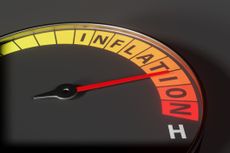 Why Does the Fed Prefer PCE Over CPI?
Why Does the Fed Prefer PCE Over CPI?Inflation has been top of mind for lots of folks in recent years. Most of Wall Street follows the CPI but the Fed favors the PCE. Here's why.
By Charles Lewis Sizemore, CFA Published
-
 Five Great Places to Live in Wyoming
Five Great Places to Live in WyomingWhether you prefer the buzzy affluence of Jackson Hole, rodeo towns or mountain towns, Wyoming should be on any nature lover’s list.
By Drew Limsky Published
-
 457 Plan Contribution Limits for 2025
457 Plan Contribution Limits for 2025Retirement plans There are higher 457 plan contribution limits for state and local government workers in 2025. That's good news for state and local government employees
By Kathryn Pomroy Last updated
-
 Medicare Basics: 11 Things You Need to Know
Medicare Basics: 11 Things You Need to KnowMedicare There's Medicare Part A, Part B, Part D, Medigap plans, Medicare Advantage plans and so on. We sort out the confusion about signing up for Medicare — and much more.
By Catherine Siskos Last updated
-
 The Seven Worst Assets to Leave Your Kids or Grandkids
The Seven Worst Assets to Leave Your Kids or Grandkidsinheritance Leaving these assets to your loved ones may be more trouble than it’s worth. Here's how to avoid adding to their grief after you're gone.
By David Rodeck Last updated
-
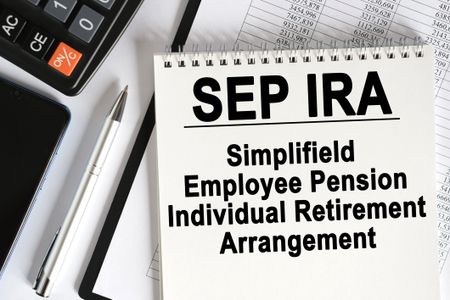 SEP IRA Contribution Limits for 2025
SEP IRA Contribution Limits for 2025SEP IRA A good option for small business owners, SEP IRAs allow individual annual contributions of as much as $69,000 in 2024 and $70,000 in 2025..
By Jackie Stewart Last updated
-
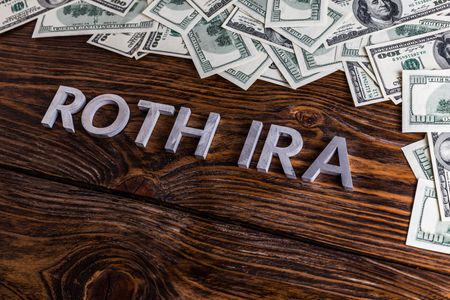 Roth IRA Contribution Limits for 2025
Roth IRA Contribution Limits for 2025Roth IRAs Roth IRA contribution limits have gone up. Here's what you need to know.
By Jackie Stewart Last updated
-
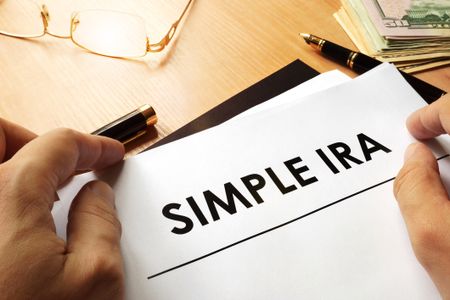 SIMPLE IRA Contribution Limits for 2025
SIMPLE IRA Contribution Limits for 2025simple IRA The SIMPLE IRA contribution limit increased by $500 for 2025. Workers at small businesses can contribute up to $16,500 or $20,000 if 50 or over and $21,750 if 60-63.
By Jackie Stewart Last updated
-
 457 Contribution Limits for 2024
457 Contribution Limits for 2024retirement plans State and local government workers can contribute more to their 457 plans in 2024 than in 2023.
By Jackie Stewart Published
-
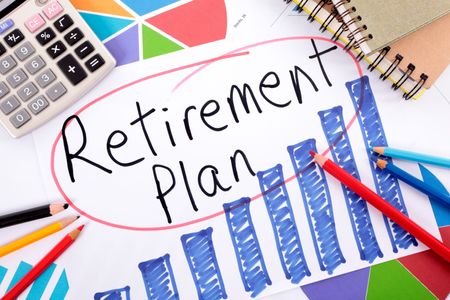 Roth 401(k) Contribution Limits for 2025
Roth 401(k) Contribution Limits for 2025retirement plans The Roth 401(k) contribution limit for 2025 increased, and workers who are 50 and older can save even more.
By Jackie Stewart Last updated